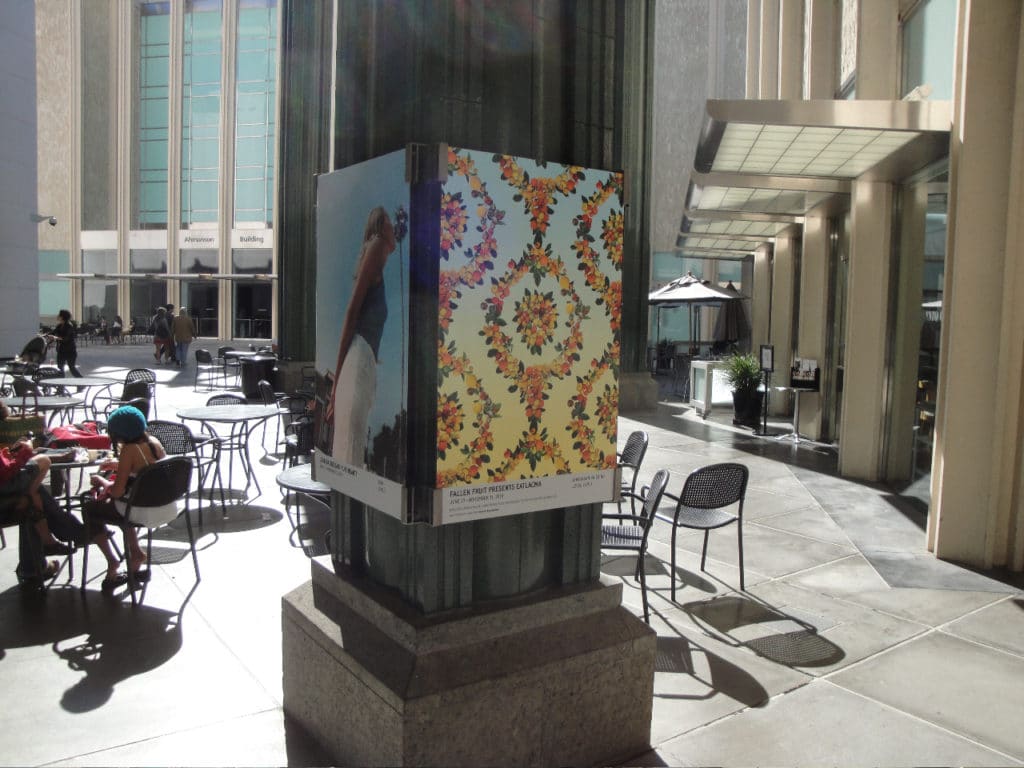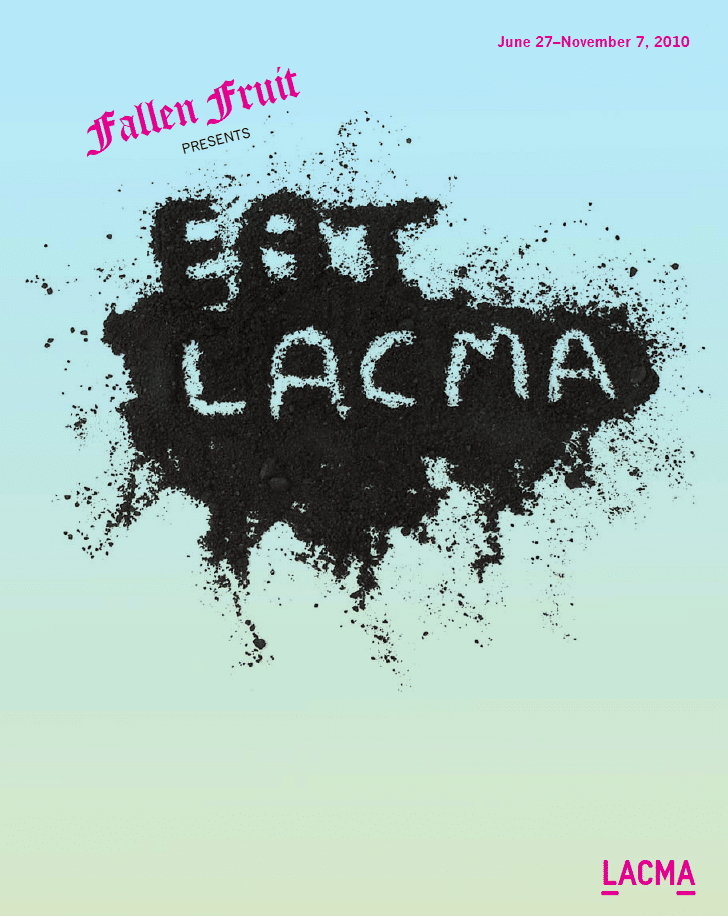EATLACMA
EATLACMA, exhibition in three parts, 2010
EATLACMA was a yearlong residency at the Los Angeles County Museum of Art with three major parts. The first was an exhibition of work from the permanent collection curated around the social topic of fruit, installed in a gallery with our Public Fruit Wallpaper, a LACMA commission. Six curated artist’s gardens probed the definition of the garden, asking if it could express an idea, or serve as a container for a set of questions and concepts. The culmination was a one-day event, curated with over fifty artists and collectives: Let Them Eat LACMA, which focused on the interaction of food, art and the public with a great variety of performances, installations, and participatory events.
EATLACMA exhibitions
Pursuing their ongoing obsession with fruit, Fallen Fruit has curated The Fruit of LACMA, assembling works from the museum’s permanent collection in several forms of media, including painting, photography, and decorative arts. The exhibition will also feature new work by Fallen Fruit, including a picnic table installation, LACMA Event Score – a text piece,Fruit Machine, a series of video portraits of people eating fruit, and Public Fruit Wallpaper, a decorative wallpaper pattern assembled from fruit publicly available, found in Silver Lake, Los Angeles, over the course of one day. Concurrently The Gardens of LACMA will be on view, showcasing artist-designed gardens installed throughout the LACMA grounds. Each artist’s garden examines public space, the actualities and symbols of food, and the people who give these things meaning.
EATLACMA is curated by Fallen Fruit – David Burns, Matias Viegener, and Austin Young – with LACMA curators Michele Urton and José Luis Blondet.
Visitors can experience and partake in art-and food-related activities across the museum campus.
(Los Angeles, October 12, 2010)—The Los Angeles County Museum of Art (LACMA), in collaboration with the Los Angeles-based artist collective Fallen Fruit, presents Let Them Eat LACMA, a day-long event that explores art, food, culture, and politics on Sunday, November 7, from noon–8 pm. With more than fifty participating artists and collectives, LACMA will teem with spectacular and subtle performances and installations that intervene in and activate the museum with surprising explorations into art and food. Let Them Eat LACMA is the culmination of the museum’s collaborative project with Fallen Fruit, EATLACMA, which investigates the social role of art and food and the rituals of eating. Since its launch in February, EATLACMA has included a series of community-oriented programming along with an exhibition and curated set of gardens on LACMA’s campus that will be on view at the event.
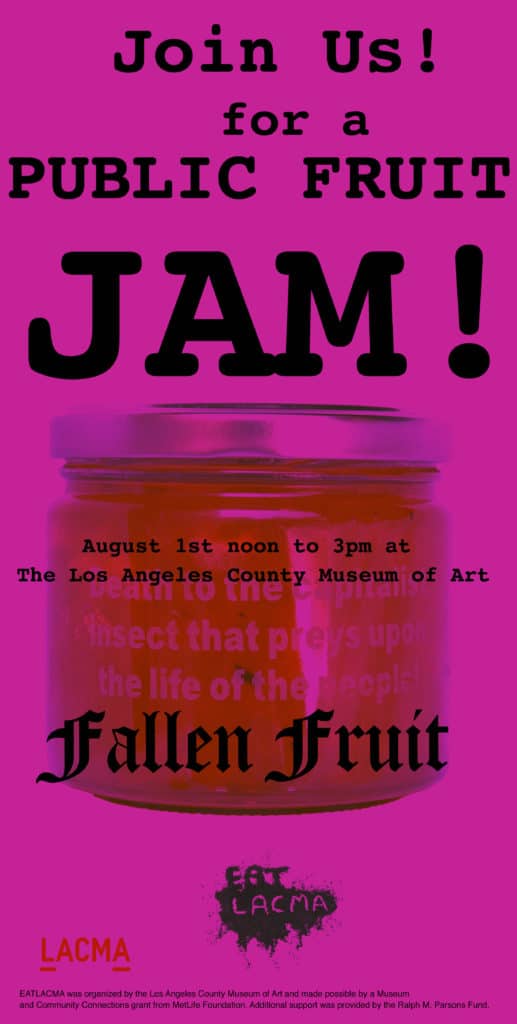
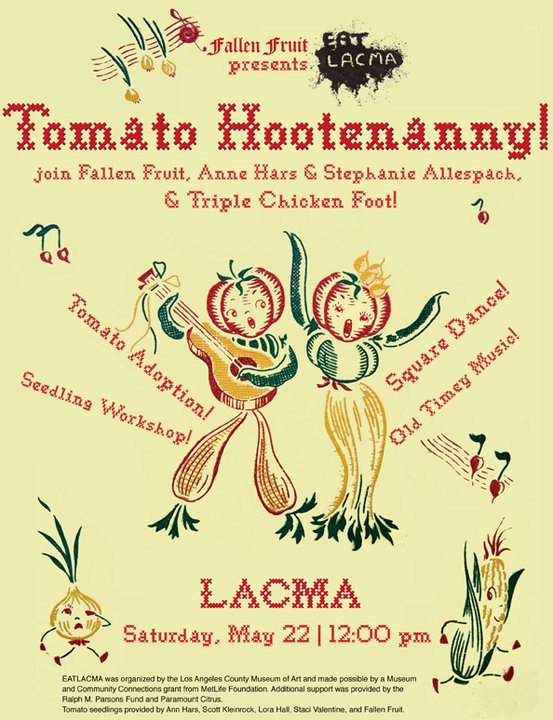
Among the artist’s projects to be seen or experienced are a tomato fight; a song and story cycle on the mystery of the knife, fork and spoon; an electronic melon drumming circle; a watermelon eating contest; Salome seducing her lover through the language of food; and a large Mandala of dinner plates ritually assembled and then dismantled by visitors who take home each plate. Other projects include a Prison Gourmet selection of food served to prisoners in California jails, chewing carolers, and belly listening sessions in which we hear digestion at its pinnacle. Pulitzer- prize winning writer Jonathan Gold will read a text on Spam, inspired by the Ed Ruscha painting in LACMA’s collection, Actual Size, which depicts a flying can of Spam. Topping it off will be three Los Angeles muses (Karen Black, Ronee Blakley, and Phranc) singing for their suppers.
Also on view at Let Them Eat LACMA will be Public Fruit Theater, a garden created by Fallen Fruit, which features a theater in the round constructed
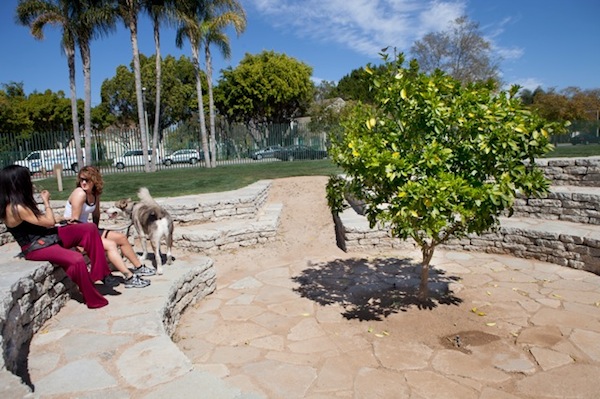
of reclaimed concrete sidewalks curving around a single citrus tree. The ―theater‖ is the durational performance of the fruit tree in its seasonal cycles, as well as viewers watching each other watch the tree grow. Public Fruit Theater comments upon LACMA’s neighborhood history as a one-time site of extensive citrus groves, as well as a meditation on today’s prevalence of concrete and lack of publically accessible or shared fruit trees.
Artists and collectives participating in Let Them Eat LACMA include Mark Allen, Gina Badger, Karen Black, Ronee Blakley, Lauren Bon, Michelle Carr, Robert Crouch, Cloud Eye Control, DidierHess, Harry Dodge, Jeanne Dunning, Fallen Fruit, Finishing School, Liz Glynn, Jonathan Gold, Veronica Gonzalez, Sean Griffin, Dana Gringas, Liz Hansen, Micol Hebron, Anna Homler, The Infamous Boom Boom!, Dawn Kasper, Emily Katrencik, Killsonic, John Knuth, Kadet Kuhne, Ann Magnuson, My Barbarian, National Bitter Melon Council, Gina Osterloh, Adam Overton, Sun-Yun Park, Phranc, Miss Barbie- Q., Marco Rios, Roots of Compromise, Jennifer Rubell, Susan Simpson, Slanguage, Åsa Sonjasddotter, Squeaky Blonde, Kim Stringfellow, Lisa Teasley, Stephen van Dyck, We Are The World, Michiko Yao, and Bari Ziperstein.
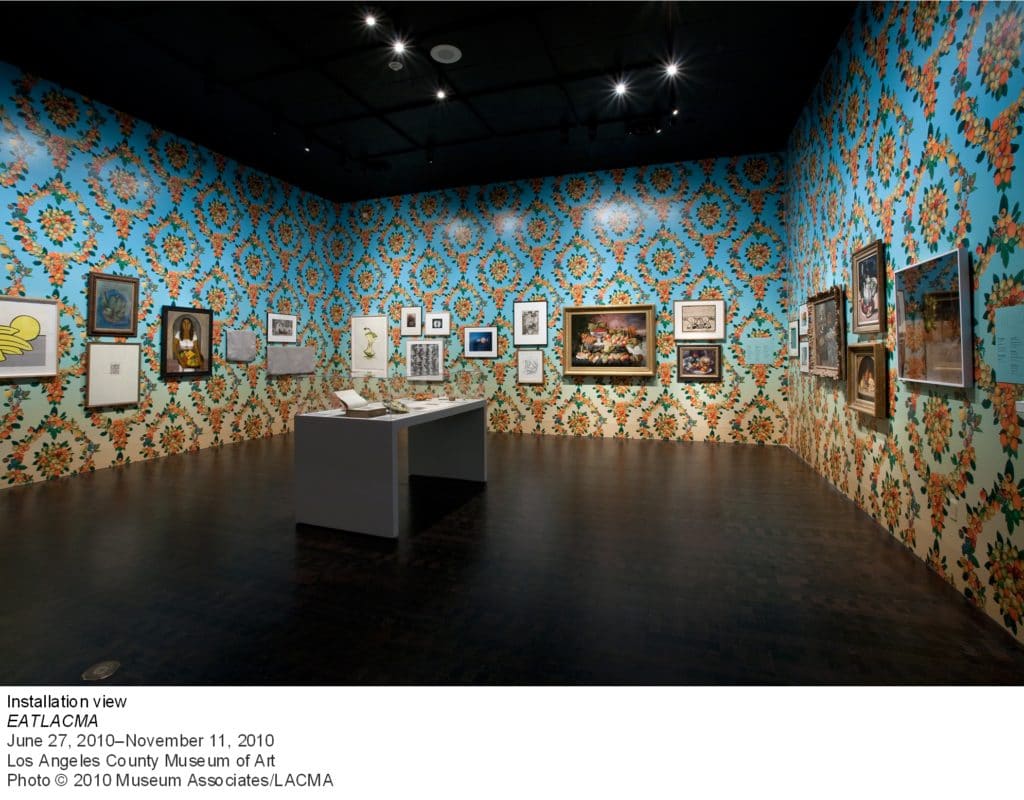
EATLACMA
EATLACMA plays the richness of the museum’s permanent collection against the natural growth cycle of gardens to create a year of programming in three acts. EATLACMA has unfolded seasonally to include The Gardens of LACMA, a curated set of gardens on the museum’s campus; The Fruit of LACMA, an exhibition curated by Fallen Fruit that draws from LACMA’s collection; and Let Them Eat LACMA.
The Fruit of LACMA assembles works from the museum’s permanent collection in several forms of media, including painting, photography, and decorative arts. The exhibition also features new work by Fallen Fruit, including Fruit Machine, a series of video portraits of people eating fruit, and Public Fruit Wallpaper, a decorative wallpaper pattern assembled from fruit publicly available and found in Silver Lake, Los Angeles, over the course of one day. The Gardens of LACMA showcases artist-designed gardens
installed throughout the LACMA grounds. Each artist’s garden examines public space, the actualities and symbols of food, and the people who give these things meaning.
EATLACMA is curated by Fallen Fruit—David Burns, Matias Viegener, and Austin Young—and José Luis Blondet, LACMA’s associate curator of special initiatives. For information online, visit eatlacma.org, and to view or contribute photos of events, gardens at the museum, fruit trees that have been planted, and all things EATLACMA, visit flickr.com/groups/eatlacma

